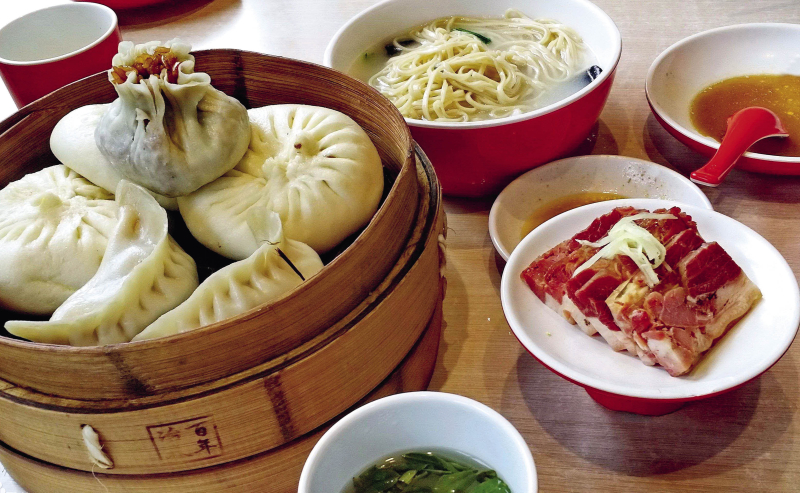
In Yangzhou, a morning tea experience has a complete set of accompanying etiquette that needs to be observed. In fact, it is a miniature formal banquet because it includes a variety of food, ranging from cold dishes to stir-fries, various dim sum, staple food, fruits, and seasoning dishes. It usually takes an hour or two to finish the whole experience, and the delicacies are served slowly one after another. The variety of dishes and dim sum as well as the exquisite preparations reflect not only the laid-back lifestyle of Yangzhou locals, but also a time-honored cultural heritage going back hundreds of years.
Tea, of course, is an essential part of every morning tea banquet. “Liuyangchun” is a local tea brand in Yangzhou. With a mellow taste, the green tea is what makes the whole experience. It helps cleanse the palate after finishing dim sum, be it a meat bun or a steamed dumpling. A circle of side dishes on the table is called “seasoning dishes,” including assorted pickles, pickled ginger slices, salted duck eggs, salted meat, and marinated mushrooms. But center in the circle is the boiled shredded dry beancurd with chicken and shrimp.
If all the seasoning dishes were to be sacrificed to make for a simple morning tea ceremony, the only thing that cannot be done without is the bowl of boiled shredded dry beancurd with chicken and shrimp. The dish requires very particular ingredients, and must be prepared with unique cutting and cooking skills. The elastic dry bean curd poses a big test for the culinary skills of a chef, especially the cutting techniques – a basic skill of a Huaiyang cuisine master. Chinese contemporary writer and essayist Wang Zengqi (1920-1997) once wrote the following about the dish, “Put small shrimp in the broth, boil it for a while, and put in the dry beancurd strands, then shredded ham and chicken. Cook until all the ingredients’ essence come out into the broth, and then the dish is ready to be served. Garnishing it with mushroom or winter bambooshoot strands would make the dish perfect.”
Traditionally, the broth used in cooking the dish is made from a variety of nutritious food, including chicken, duck, and pork bones. The fresh and tasty chicken, aromatic duck, and nutritious pork bone all contribute to the essence of the final dish. When the dish is served, there is no tiny hint of chicken, duck, or pork bones, but only shredded beancurd, dried shrimps, and the thick soup.
There are a variety of steamed stuffed buns on the morning tea table. The most famous include those with fillings made from three or five types of sliced ingredients, respectively. The filling for “sanding” buns is made of diced chicken, pork, and bambooshoots, while two more types of ingredients, ginseng and shrimp, are added to the filling for “wuding” buns. Buns with vegetable fillings and sweetened bean paste are also popular.
The crab soup dumpling in Yangzhou is very popular. It is about some 10 centimeters in diameter. The correct way to eat the dumpling is known as taking a small bite first to “open a window, and have the soup.” The secret to the soup dumpling is the pork skin jelly in the fillings. Smash the pork skin jelly and mix it with crab meat and other ingredients, and then stuff the fillings in the dumplings. Before putting them into a steamer, the dumplings look the same as ordinary steamed buns. When they are steamed, the pork skin jelly melts and makes succulent crab soup dumplings.
In this fast-developing society, generations of Yangzhou residents still maintain the morning tea tradition. It has long become an indispensable part of their lifestyle.